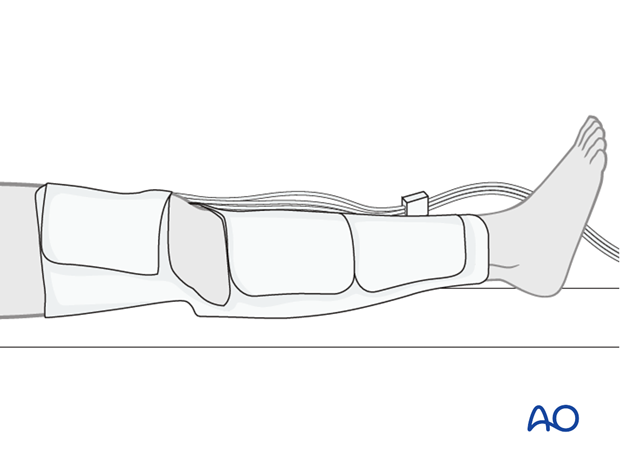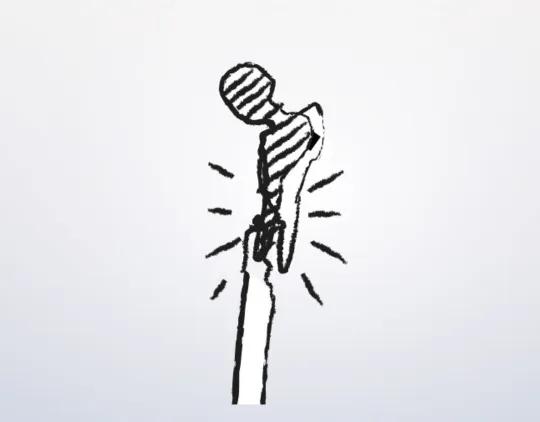Compression plate and screw fixation
1. Principles
Unstable simple fractures around or distal to stable femoral stems are amendable to traditional compression plating techniques.
The goal is to create a stable environment for the arthroplasty and for the femoral diaphysis.
These fractures include:
- Short oblique
- Spiral
- Transverse

2. Approach
Direct lateral approach
Direct lateral approach to the femoral diaphysis is typically utilized. This can be performed in a minimally invasive fashion for some fracture patterns and proximal and/or distal extension of deep surgical approach can be utilized in a fracture specific manner.

Other approaches
Other approaches that can be used to perform this procedure are:
- Anterolateral approach
- Direct anterior approach
- Iliofemoral (Smith-Petersen) approach
- Posterolateral approach
- Trochanteric osteotomy
- Extended trochanteric osteotomy
These approaches can be performed with the patient in a lateral or supine position.
Option: use of a radiolucent or fracture specific table
A radiolucent table or a fracture specific table may be used.
The choice depends on surgeon experience and preference. The control of the fracture may often be more difficult on a traction table.
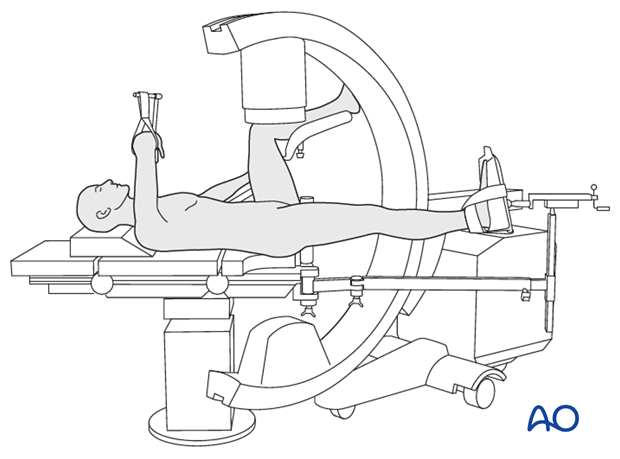
3. Reduction
Direct reduction
Reduction is typically carried out using a combination of direct and indirect methods. Limb manipulation will help in an indirect manner. Direct reduction with clearance of fracture hematoma and stabilization with pointed bone reduction clamps can then be completed.
The Collinear reduction clamp can be extremely helpful in facilitating reduction. It is applied from the direct lateral incision with proximal extension.
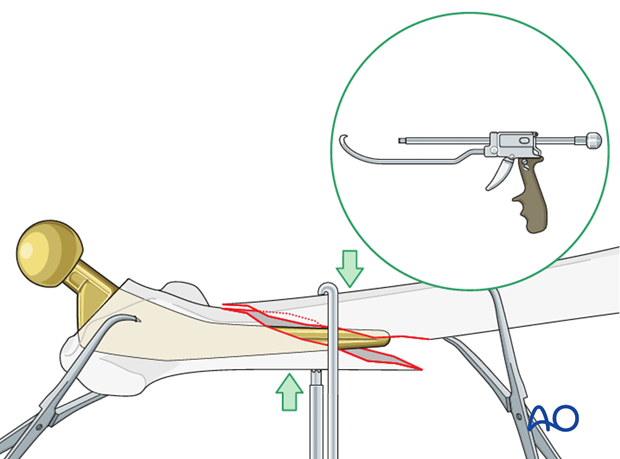
For short oblique or spiral fractures, provisional wire stabilization can be extremely helpful. Care must be taken to avoid applying wires in the pathway of planned definitive stabilization.
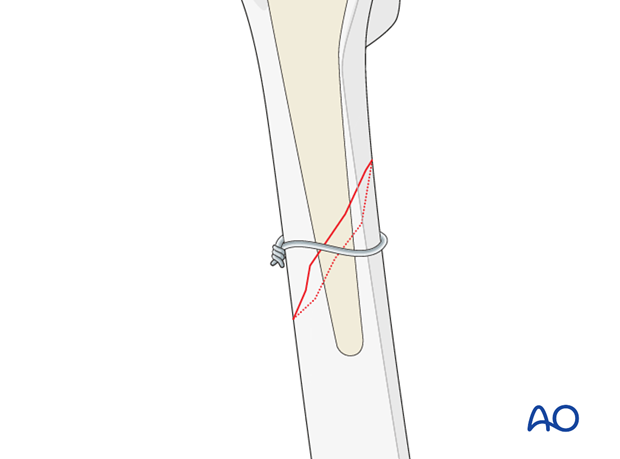
Option: traction aids
The reduction can be facilitated with manual traction and/or distal femoral skeleton traction.
Skeletal traction may be placed in the distal femur or the proximal tibia, depending on surgeon's preference. However, the distal femur is much more effective in facilitating direct reduction of periprosthetic femur fractures.
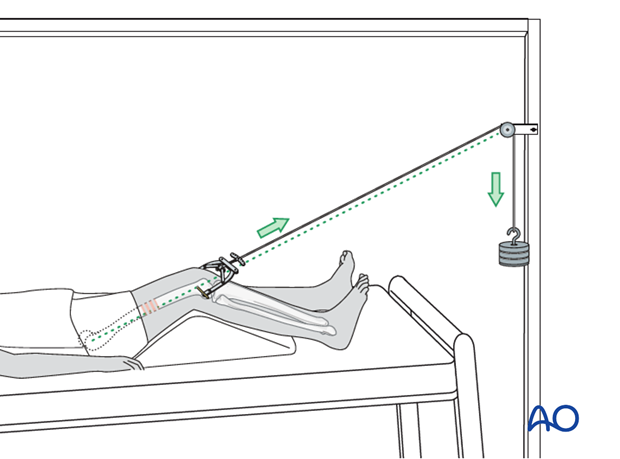
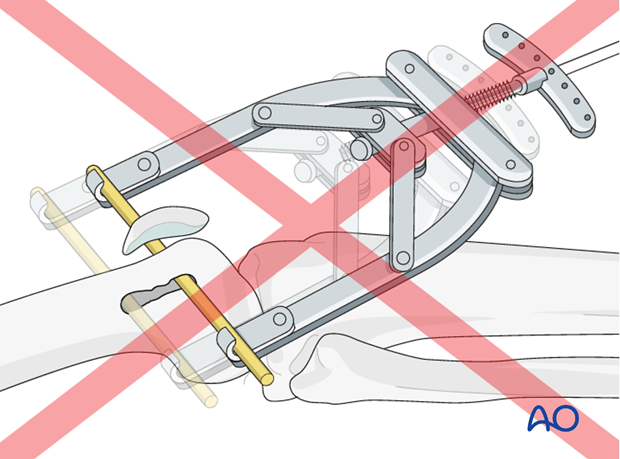
4. Fixation
Implant selection
Fixation can be achieved with either lag screw and neutralization or traditional compression plate technique.
Femoral plate length should be three times the length of the fracture zone and care should be taken to prophylactically prevent future fracture either in between implants or at the end of the zone of fixation.

The femur has a sagittal bow and proximal or distal fixation may be desired. If available, a precontoured or anatomic plate should be selected.
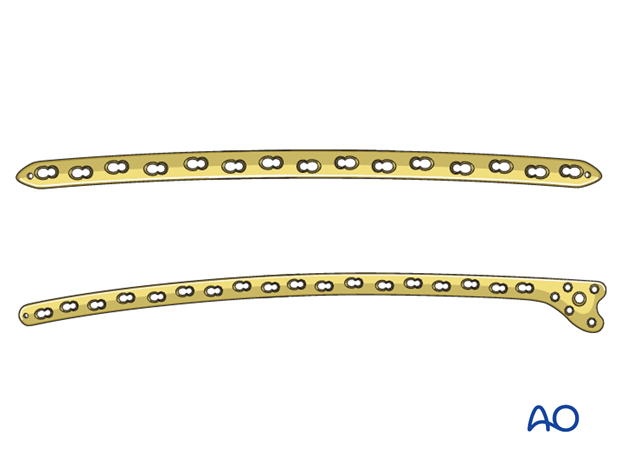
Compression plate application
The plate is applied on the lateral cortex of the femur.
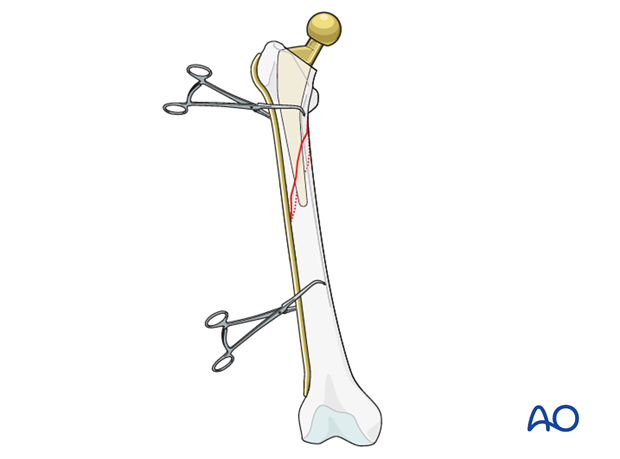
A screw is applied to create an axilla.

A compression screw is applied at the other side in compression mode to achieve fracture compression.
For more details regarding compression plates please refer to the dedicated section of the distal femur in the AO Surgery Reference.

Options for additional stability
Additional stabilization can be achieved with locking and nonlocking screw fixation above and below the fracture site.
If there is no room for bicortical screw fixation, different options may be used around the femoral stem:
- Unicortical locking screw fixation
- Cerclage cables integrated into the plate
- Locking attachment plate
For additional details on these implants please refer to adjunct plate options.
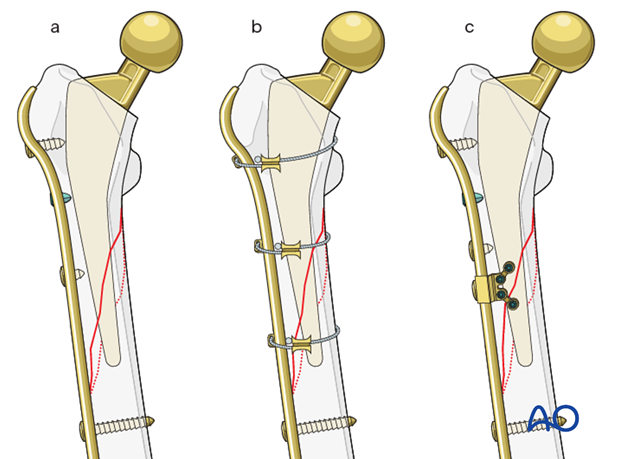
Fractures at the tip of the stem
If the fracture is at the tip of the stem of a well-fixed prosthesis, fracture compression may be achieved with a different technique.

The bone is removed from the tip of the stem with a rongeur or a high-speed burr.
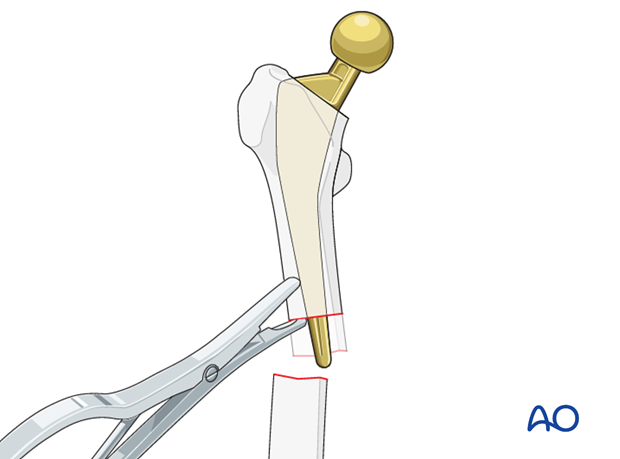
The stem is inserted into the distal femoral portion and compression applied utilizing standard techniques over the top of the tip of the prosthesis.
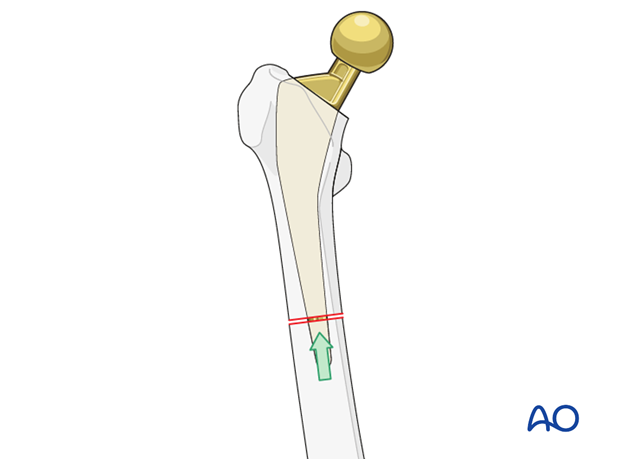
5. Aftercare following ORIF
Postoperative management
Postoperative management should include careful monitoring of hematocrit and electrolytes particularly in the elderly patients.
Postoperative IV antibiotics should be administered up to 24 hours.
Consideration should be given to anticoagulation for a minimal course of 35 days. If there are thromboembolic complication this treatment is extended.
Drains can be discontinued when output is less than 30 to 50 cc per 12 hours.
Patient mobilization
Immediate mobilization of the patient should commence. If fracture stability will allow, the patient should be made weight bearing as tolerated as soon as possible. Long periods of limited weight bearing are extremely detrimental to patient recovery.
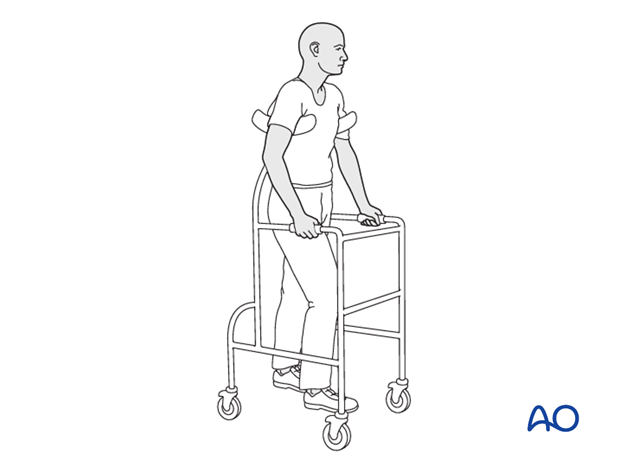
Wound healing
Avoidance of edema postoperatively is critical for both wound healing and patient mobilization. This can be aided by pneumatic compression devices. If negative pressure wound therapy is utilized, it can be discontinued after 5 to 7 days. Staples or sutures are typically removed at 14 to 21 days.
